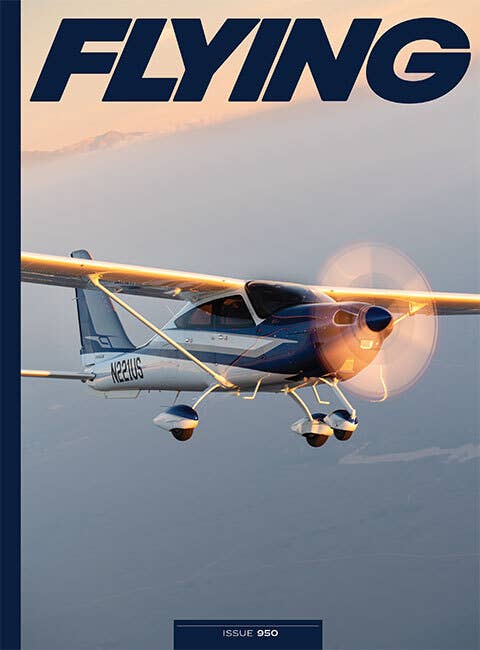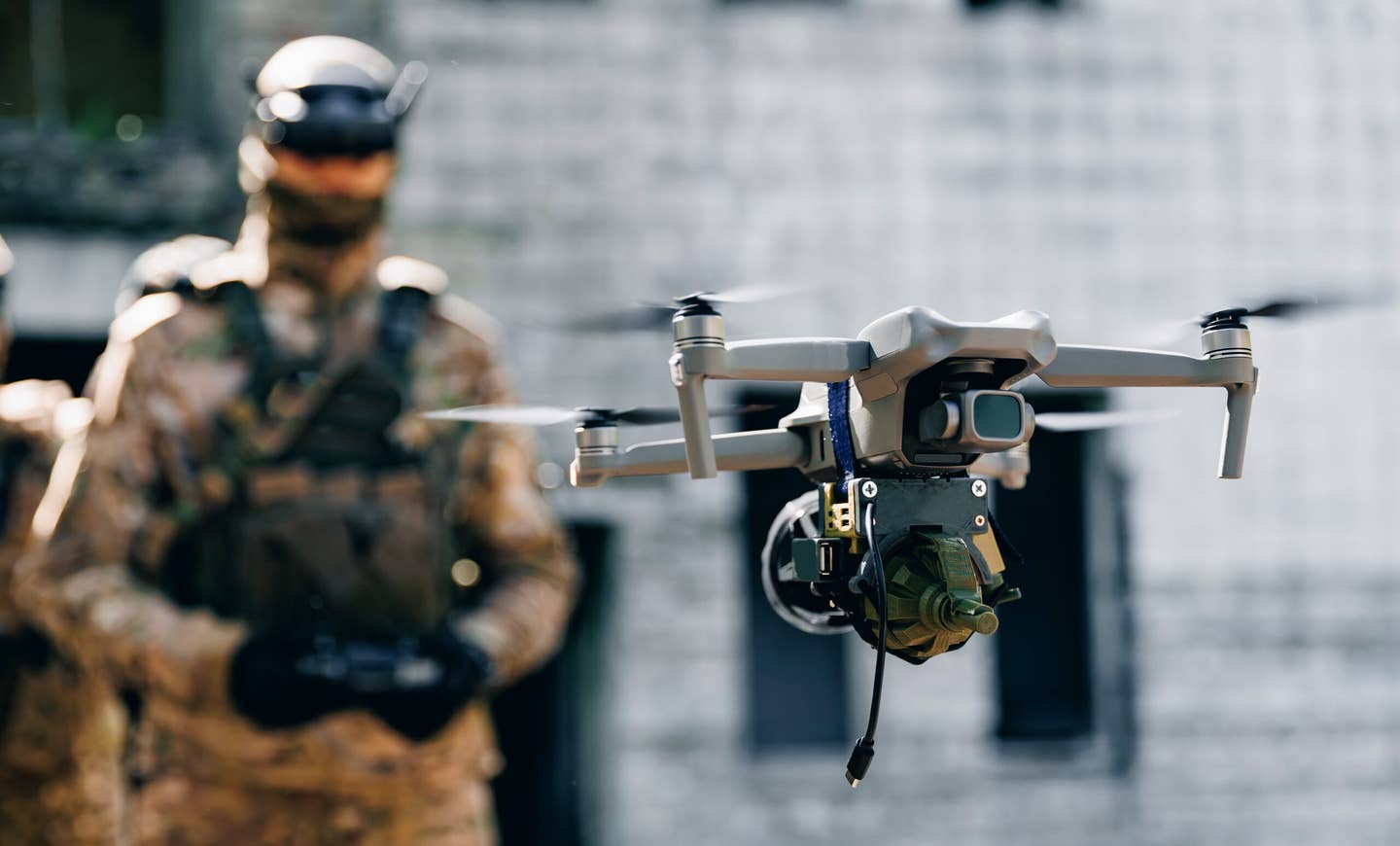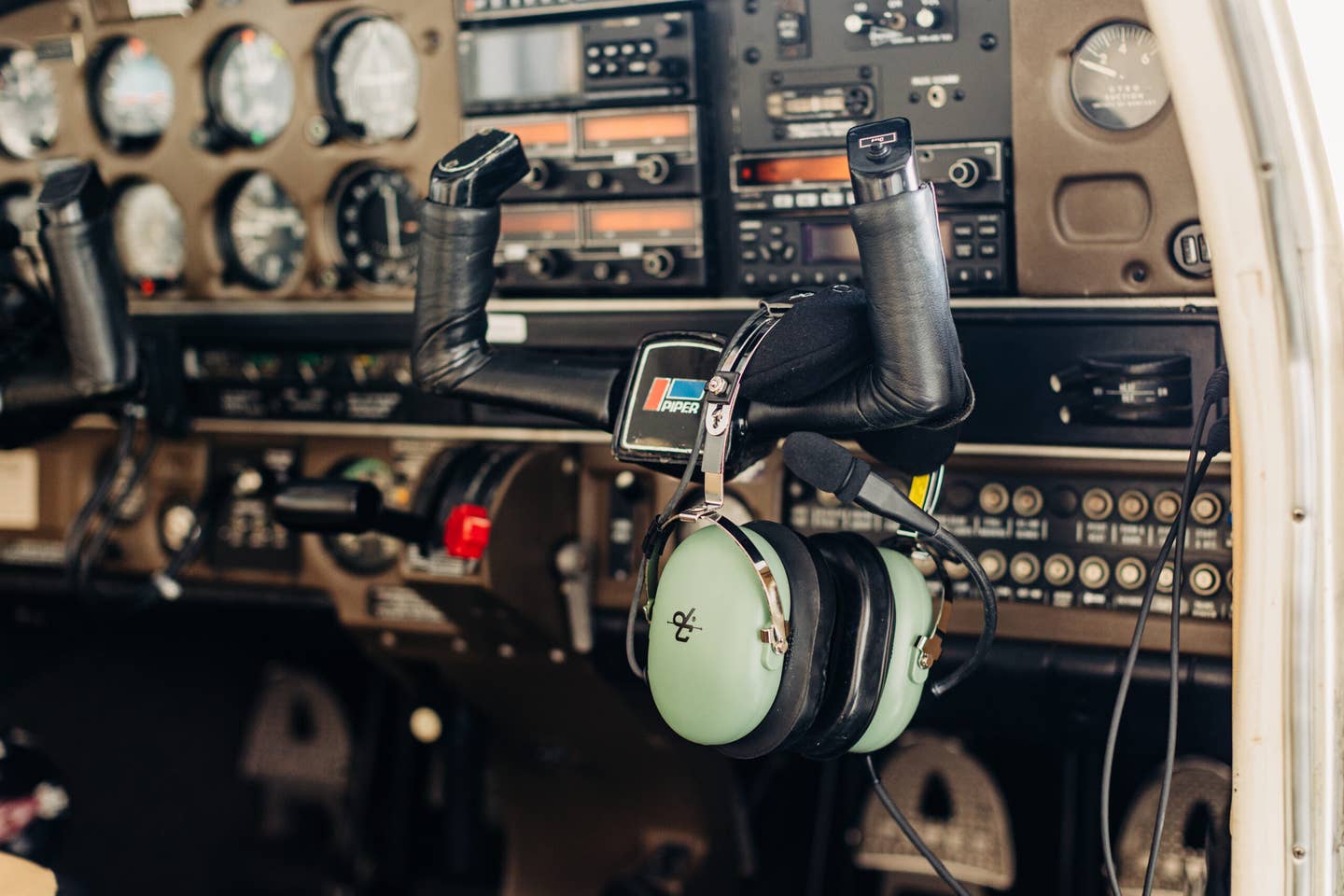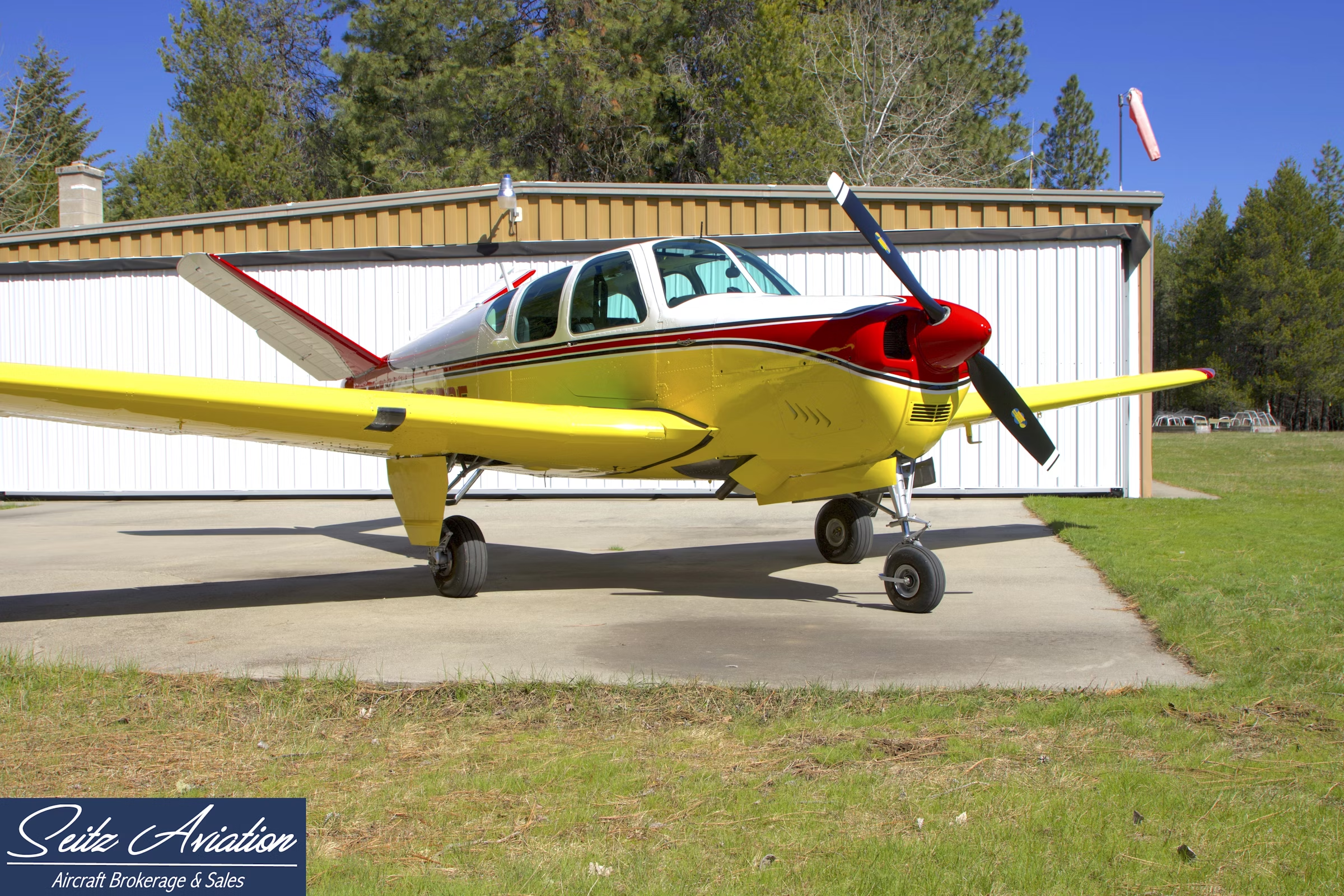How Somatogravic Illusion Kills Pilots
Deadly deception reveals itself in seemingly unrelated ways and can sneak up before you know what happened.

Somatogravic illusion (SGI) is a stealthy killer. [Shutterstock]
Somatogravic illusion (SGI) is a stealthy killer. It reveals itself in seemingly unrelated ways and can sneak up and kill you before you know what happened.
Here are some different accident types in which SGI apparently reared its ugly head:
• In November 2011, a Cessna 310 took off IFR from Palo Alto, California (KPAO), one morning in nearly zero visibility due to fog. The aircraft climbed to approximately 50 feet, flew level for about a mile, then collided with a power transmission line. The four occupants on board were killed.
If you're not already a subscriber, what are you waiting for? Subscribe today to get the issue as soon as it is released in either Print or Digital formats.
Subscribe Now• In February 2019, the first officer of Atlas Air Flight 3591, a Boeing 767 cargo plane, inadvertently activated the go-around switch while the aircraft was descending to 3,000 feet in IMC. As the aircraft accelerated in a nose-up attitude, the copilot pushed forward on the control column. The aircraft came out of the clouds at about a 45-degree nose-down angle before crashing.
• In December 2022, a Piper Cherokee (N4676F), took off from Venice, Florida (KVNC), over the Gulf of Mexico in dark night conditions with good visibility and clouds at 5,000 feet. The airplane climbed to about 75 feet and accelerated to a ground speed of 94 knots, then began a descent. The last radar capture was about 1,800 feet beyond the departure end of Runway 23 and showed the plane at 0 feet and 109 knots. An engine examination revealed no preimpact mechanical anomalies that would have prevented normal operation.
There have been multiple airliner accidents and incidents that occurred during the beginning of the missed approach as the airliner accelerated. After accelerating, the crew pushed forward on the control column instead of climbing.
These seemingly different accidents have something in common.
In all cases, the aircraft was accelerating in an environment where the pilot had no outside visual references due to clouds or darkness. Instead of pitching to and maintaining a climb attitude, all the pilots pushed forward on the yoke, resulting in controlled flight into terrain.
Part of the reason somatogravic illusion kills is because many pilots lack knowledge about it. So, when it occurs, they don’t understand the false sensations they’re experiencing.
In the Atlas Air accident, the National Transportation Safety Board (NTSB) calculated that due to SGI, the crew likely experienced a sensation equivalent to a nose pitch-up attitude of 80 degrees, or nearly straight up, which led the pilot to push the nose down.
Avoiding SGI is easy, and the circumstances under which it occurs are few and not difficult to identify if you can recognize them.
The remedy is simple and is something we’ve all been taught—trust your instruments. Ignore the physical sensations. Scan the instruments and manipulate the controls until the flight instruments show you’re at the correct pitch attitude, which might be straight and level or even a normal climb, depending upon the phase of flight.
The key to understanding SGI is knowing that your body and senses can trick you, creating a powerful sensation that makes you feel as if the aircraft is pitched far above its actual attitude.
This false sensation comes from one of the otolith organs in the inner ear that help detect the position of your head. When walking or running, the otolith organs tell us whether our head is leaning to the side or pitched up or down. There are two otolith organs in each ear positioned at right angles to each other. The one responsible for somatogravic illusion is the utricle, and it gives us feedback on how much our head is tilted up or down.
Here’s a simple experiment to illustrate what happens inside the utricle.
You’ll need to gather a small piece of wood (perhaps a length of two-by-four), a length of wire or spring (flexible enough so when you bend one end and let go, it springs back to its original position), and a golf ball. Next, attach about 6 inches of that wire or spring to the wood so that it stands up straight. Finally, drill a shallow hole in the golf ball and mount it on top of the wire or spring.
The wire or spring represents one of the hairs in the utricle that senses direction when moved. The golf ball represents the mass on top of each hair, which is made of calcium carbonate crystals. The crystal adds weight to the top of the hair, which increases inertia and makes the hairs more sensitive to movement.
Now imagine lifting one end of the two-by-four so it’s higher than the other, simulating an aircraft in a climb configuration. As you lift one end, the weight of the golf ball tilts the wire or spring toward the low end of the board as gravity pulls it downward. That’s how the hairs in the utricle move when you tilt your head backward. As the hairs bend, we correctly perceive that our head is tilted back, since gravity pulls the mass on each hair backward.
- READ MORE: When Curse of Haze Close In, Pilots Beware
The same thing occurs in a climbing airplane but only after our climb is stabilized and we are climbing at a constant rate. Because the airplane is pitched up, the hairs bend backward, and we correctly perceive our body is tilted backward. If we took our board and attached it to the airplane’s floor, we would see the same thing in a climb—the golf ball would be tilted toward the back of the airplane during that maneuver.
The utricle is working the way it’s supposed to and is giving the brain proper feedback about the body. But now let’s look at how the utricle sends us false signals when we fly airplanes.
Imagine sliding the board rapidly from one end of a table to the other to accelerate the board. As you do that, the golf ball moves backward toward the end of the table where you started. Also, as you stop moving the board and it decelerates, the golf ball moves forward, toward the far end of the table due to its inertia.
In both demonstrations, in the airplane and on the table, the golf ball moved toward the back side of the board. Likewise, under similar circumstances, the hairs in the utricle would move in the same direction, and we would have perceived that motion as our head tilting up.
But in the second demonstration, the accelerating board was level and never pitched up. So, if we relied only on our utricle to tell us what’s happening, we wouldn’t be able to distinguish between situations where our head was tilting backward versus those where our body was accelerated forward because the sensation is identical.
But we have other senses, including vision, that let us confirm whether a pitch-up feeling is real or is actually acceleration. Generally, we don’t realize when these misperceptions occur, and SGI is not a problem in our lives. But if you take away visual cues, such as the view of the horizon, you can no longer distinguish between whether the sensation from the utricles is truly a pitch-up climb or acceleration with no climb.
Here are three situations where pilots are most vulnerable and likely to be confused by somatogravic illusion:
• It often occurs in dark night conditions (no moon), when pilots take off over a poorly lit surface below.
• It often occurs at airports located next to water, which appears black at night.
• It also occurs during takeoff at night at airports in rural areas adjacent to farm fields or mountains with few lights below.
In these dark night conditions, SGI can be strong and immediate—most of these accidents occur within a mile of the airport.
In these situations, as an aircraft accelerates after takeoff, somatogravic illusion leads the pilot to perceive their heads are tilting back, and they interpret this as a climb. Since they perceive a climb, they don’t feel a need to pull back on the yoke as much as they should.
Instead, they fly straight and level or, sometimes incorrectly thinking the aircraft is in a nose-high attitude that could put the aircraft at risk for stall, push forward on the yoke, creating a descent. When the same sensation occurs during day VMC, the visual cues of the horizon and surroundings provide other feedback that confirms the climb should continue. But at night, when taking off over dark and poorly lit areas, pilots don’t get outside visual feedback, therefore, they won’t be aware they have leveled off or are descending.
It is an easy fix. When taking off at night, pilots need to look at their instruments immediately after rotation, and verify they are climbing at VY, the best rate of climb speed, and that the vertical speed indicator is showing a positive rate of climb. Pilots should never assume they are climbing, even if it feels as if they are.
The same issues can occur during an instrument takeoff in poor visibility. Part 121 airliners and Part 135 charter aircraft are not permitted to take off in low visibility conditions because it is so dangerous. There is no such limitation on GA pilots flying under Part 91 in regard to takeoff in low visibility. However, many pilots don’t understand how SGI makes these kinds of takeoffs treacherous.
In the original Cessna 310 accident mentioned, visibility was so poor the tower controller could not see the runway and so they were unable to clear them for takeoff. However, the controller did advise the pilot that takeoff was permitted at their own risk.
A third situation where somatogravic Illusion routinely occurs is at the beginning of a missed approach, following an instrument approach. As a CFI, I witness this phenomenon frequently.
At minimums, the pilot usually pushes the go-around button, if they have one, and disconnects the autopilot. Then they add full power and raise the flaps and landing gear. But many fail to pitch up to climb because their utricles are falsely telling them they are already pitched up and climbing. The lesson here: When going missed, remember to pitch up, verify you’re climbing at VY, and that you have a positive rate of climb on the VSI.
These flawed missed approaches also happen to airliners, and the April incident involving Southwest Airlines Flight 2786 in Hawaii represents a prime example.
While we don’t have the full details of that flight, what we do know shows all the hallmarks of the pilots responding incorrectly due to SGI. Rather than climbing on the missed approach, the crew acted in ways that led the aircraft to descend during the missed approach, coming to within 400 feet of the ocean at a descent rate that reached 4,400 feet per minute.
That was a close call that could easily have led to a fatal crash.
That 737 crew, by its own admission, did a few things incorrectly. The reason we know the details of what happened is because the crew made an ASAP report to its airline. ASAP stands for Aviation Safety Action Program, and it’s a reporting system used by all major airlines. You can read about it in detail in the FAA’s Advisory Circular 120-66C.
The objective of an ASAP program is to encourage employees to voluntarily report safety information that may be critical to identifying potential problems. Normally these reports are internal to an airline, but since information was leaked to the media and has been published elsewhere, we’ll discuss it to promote understanding of this safety-related issue.
A leaked internal memo from Southwest’s director of flight safety programs and assurance reads in part:
“The crew briefed the go-around procedure, anticipating they would be unable to see the runway at minimums. As expected, the first officer did not have the runaway in sight by minimums and called ‘Go-Around.’ Both pilots described the events from the first officer’s go-around call to the holding altitude as a high workload and task saturated.
“During the go-around, the first officer inadvertently pushed forward on the control column while following thrust lever movement commanded by the autothrottle. At this point, the first officer noticed the red airspeed tape and pulled back on the thrust levers, resulting in a descent. Safety data confirmed the crew received a ‘DON’T SINK’ GPWS aural warning followed by a ‘PULL UP’ GPWS aural warning.
“The first officer later stated they did not hear the warnings due to the intense task saturation. The captain assessed that the aircraft was in an undesirable state based on the GPWS warnings and verbalized ‘ Climb’ and ‘ Turn left,’ immediately prompting the first officer to increase the thrust. The aircraft climbed aggressively during the recovery, maxing out at +8,500 feet per minute.”
The ADS-B data for the event shows the aircraft flying level at the minimum descent altitude (MDA) for about eight seconds before it begins a descent. During the next 10 seconds, it drops down to 400 feet msl before it begins a rapid climb.
The airspeed is significant. It was relatively constant on the approach at about 145 knots until the aircraft reached the MDA. As soon as it reached the MDA, the airspeed immediately started to increase because the thrust levers were coming up, but the aircraft was flying straight and level.
While level at the MDA, the airspeed did an almost linear increase from 145 knots to about 185 knots. At this point, the aircraft started a sharp descent and airspeed continued to increase from 185 to 235 knots. This acceleration undoubtedly gave the crew the perception it was pitched up, leading it to push forward on the control column.
Although this crew recovered in time, not all crews do.
In August 2000, Gulf Air Flight 072 crashed, killing 143 people on board the Airbus A320, under similar circumstances. The final report reads in part: “...During the go-around, as the captain was dealing with the flap over-speed situation, he applied a nose-down side-stick input, resulting in a nose-down pitch. While the aircraft was accelerating with (takeoff and go-around) TOGA power in total darkness, the somatogravic illusion could have caused the captain to perceive (falsely) that the aircraft was ‘pitching up.’ He would have responded by making a ‘nose down’ input. The aircraft descended and flew into the sea.”
If you’d like to safely experience somatogravic illusion, do this the next time you are a passenger on an airliner.
Just before the takeoff roll, note the relative pitch angle of the floor and close your eyes. Keep your eyes closed throughout the takeoff roll and for the initial climb, when the aircraft will accelerate more. Before opening your eyes, imagine the pitch of the floor. Then open your eyes. Typically, because of SGI, the actual pitch of the floor will be lower than you perceived it when your eyes were closed.
Sadly, each year there are multiple fatal GA crashes in the U.S. for which somatogravic illusion appears to have been a factor. When climbing, never rely on a feeling that you’re climbing. Always check your instruments and verify that you’re climbing, so you don’t become another statistic. [
This feature first appeared in the December Issue 953 of the FLYING print edition.

Sign-up for newsletters & special offers!
Get the latest FLYING stories & special offers delivered directly to your inbox







